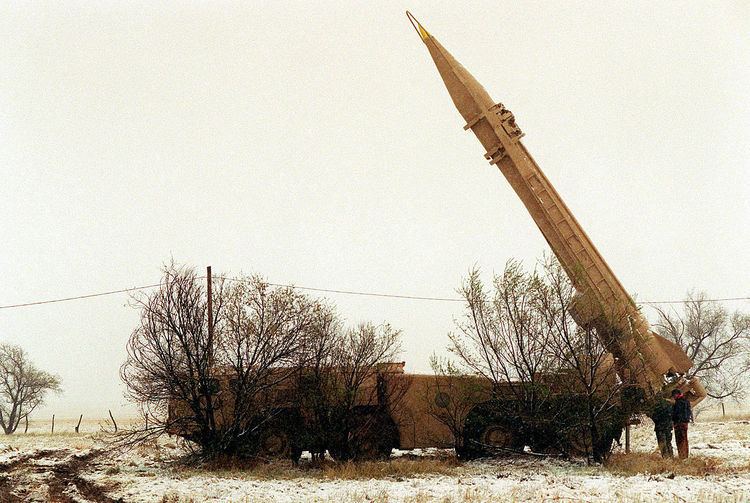Type SRBM Diameter 0.88 m | In service 1989 or 1990 Length 12 m Warhead One | |
 | ||
The Hwasong-6 (Chosŏn'gŭl: 화성 6; Hancha: 火星 6) is a North Korean tactical ballistic missile. It is derived from the Hwasong-5, itself a derivative of the Soviet R-17 Elbrus. It carries the NATO reporting name Scud.
Work on an extended-range version of the Hwasong-5 began in 1988, and with only relatively minor modifications, a new type was produced from 1989, designated Hwasong-6 ("Scud Mod. C" or "Scud-C"). It was first tested in June 1990, and entered full-scale production the same year, or in 1991. It was superseded by the Rodong-1.
To increase range over its predecessor, the Hwasong-6 has its payload deceased to 770 kg (1,700 lb) and the length of the rocket body extended to increase the propellant by 25%; accuracy is 700–1,000 meters circular error probability (CEP). Such range is sufficient to strike targets as far away as western Japan. Its dimensions are identical to the original Hwasong-5. Due to difficulties in procuring MAZ-543 TELs, mobile launchers were produced in North Korea. By 1999, North Korea was estimated to have produced 600 to 1,000 Hwasong-6 missiles, of which 25 had been launched in tests, 300 to 500 had been exported, and 300 to 600 were in service with the Korean People's Army.
The Hwasong-6 was exported to Iran, where it is designated as the Shahab-2, and to Syria, where it is manufactured under licence with Chinese assistance.
